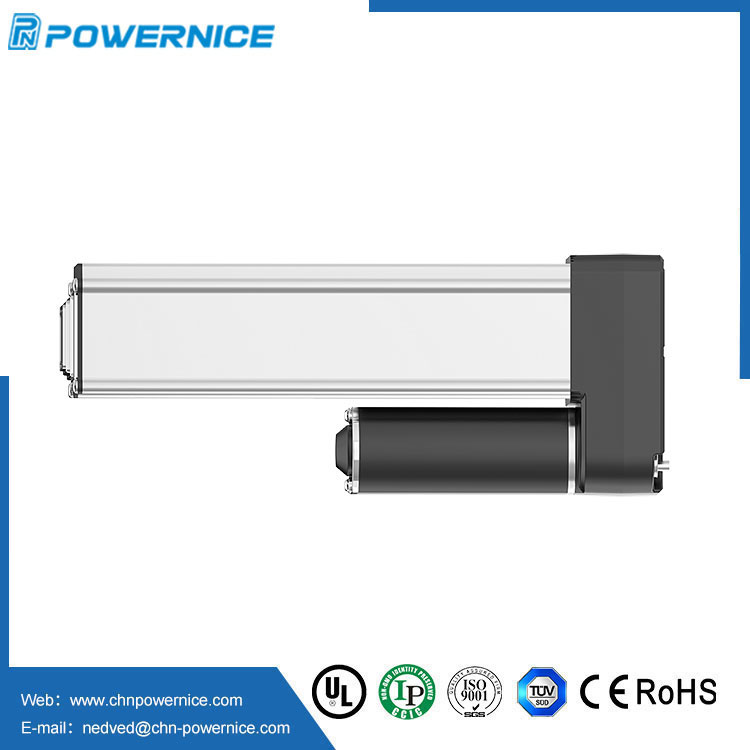What are the types of linear actuators?
2023-10-17
Linear actuators are devices that convert rotary motion into linear motion, and they come in various types, each designed for specific applications. Here are some common types of linear actuators:
1. Mechanical Screw Actuators: These actuators use a threaded screw shaft and a nut to convert rotational motion into linear motion. As the screw rotates, it moves the nut along its threads, resulting in linear displacement. They are known for their precision and high load capacity.

2. Electromechanical Actuators: These actuators use an electric motor to drive a mechanical system that produces linear motion. They are commonly used in applications where precise control and positioning are required.
3. Pneumatic Actuators: Pneumatic actuators use compressed air to create linear motion. They are often used in applications where high-speed and low-to-medium force are needed, such as in robotics and automation.
4. Hydraulic Actuators: Hydraulic actuators use pressurized fluid (usually oil) to generate linear motion. They are known for their high force output and are commonly used in heavy machinery and industrial applications.
5. Piezoelectric Actuators: These actuators use the piezoelectric effect to generate linear motion when an electric field is applied to certain materials, causing them to expand or contract. They are used in precision positioning and nano-scale applications.
6. Linear Solenoids: Linear solenoids use a coil of wire and a plunger to create linear motion when an electric current is applied. They are often used in simple on/off applications or where short strokes are required.
7. Belt-Driven Actuators: These actuators use a belt and pulley system to transmit motion. They are often used in applications that require high-speed linear motion and are relatively simple to control.
8. Chain-Driven Actuators: Similar to belt-driven actuators, chain-driven actuators use a chain and sprocket system to transmit motion. They are suitable for applications that require high load capacity and durability.
9. Linear Motor Actuators: Linear motors use a magnetic field to produce linear motion directly, eliminating the need for mechanical components like screws or belts. They offer high-speed and precise motion control and are often used in applications like CNC machines and high-speed automation.
10. Mechanical Linkage Actuators: These actuators use a system of linkages and levers to convert rotary motion into linear motion. They are used in applications where compactness and precision are essential.
The choice of linear actuator type depends on factors such as the required force, speed, precision, environmental conditions, and cost constraints of the specific application. Each type of linear actuator has its advantages and disadvantages, making it important to select the one that best suits the intended purpose.


